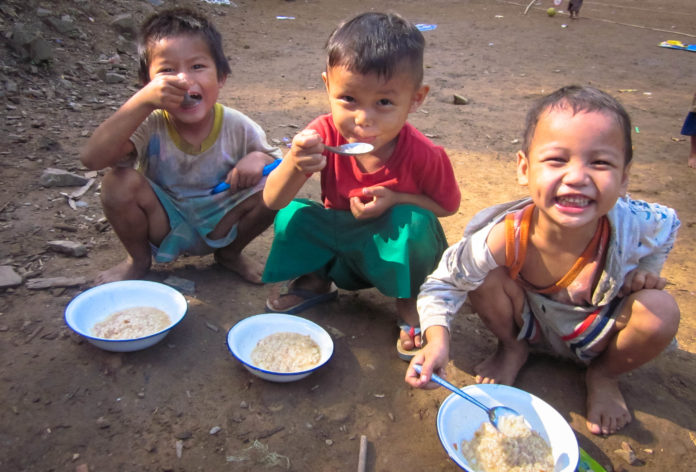The microbe-boosting diet, touted as a miracle food has been developed by scientists in Bangladesh and the US
In developing countries like India and Bangladesh, two in four kids will never grow to a normal height. Even in developed countries, the number can be as high as one in four.
The reason? Malnutrition.
Around 45% of deaths among children under five can be attributed to undernutrition according to World Health Organization.
But now researchers from the Washington University School of Medicine in St. Louis and the International Centre for Diarrhoeal Disease Research in Dhaka, Bangladesh, report an effective diet that could help millions of malnourished children globally.
The food was designed to develop a mature gut microbial community, necessary for proper growth and functioning, in the digestive tracts damaged by acute childhood malnutrition.
The work was published in two back-to-back papers in Science. They are the “Effects of microbiota-directed foods in gnotobiotic animals and undernourished children” and “A sparse covarying unit that describes healthy and impaired human gut microbiota development“, both of which are led by Jeffrey Gordon, MD, the Robert J. Glaser distinguished university professor in the department of pathology and immunology at the Washington University School of Medicine in St. Louis (WUSTL) and a pioneer in the microbiome field.
“There are precious microbial resources [in the gut], and we want to nurture them, so that our children can, you know, be as healthy as possible.”
The diet can boost key colonies of gut bacteria in malnourished kids. The finding is important because past research has shown these bacteria are essential for healthy growth and development. The study paves the way for a new wave of food therapy focused on tackling malnutrition from a gut bacteria perspective.
“You can basically think of it as a developmental abnormality affecting a microbial community,” says Jeffrey Gordon, a microbiome scientist at Washington University in St. Louis, Missouri, who led the investigation. “Most people think about human development from the perspective of our human organs or human cells. But there’s another dimension to our development, and that is the assembly of these microbial communities.”
The challenge with studying gut bacteria is that there are way too many species of them and they all interact with each other differently. So it’s nearly impossible to follow them all and measure the effects of therapeutic interventions, say via food ingestion. To circumvent this issue, Gordon used advanced computational models to identify a signature cluster of bacterial strains associated with healthy development that they could just focus on.
Gordon used both mice and piglets to test changes in gut bacteria after eating foods commonly consumed in Dhaka, Bangladesh. There he has a multi-year-long collaboration sponsored by the Bill & Melinda Gates Foundation with the International Centre for Diarrhoeal Disease Research.
Gordon’s study highlights the role microbes play far-beyond the walls of the gut. He is now working on a much larger study to confirm that the effects he observed in blood translate to gains in height and long-lasting health improvement.
“It’s important that we be the best possible custodians that we can be of the healthy development of our infants and children’s gut microbial community,” Gordon says. “There are precious microbial resources [in the gut], and we want to nurture them, so that our children can, you know, be as healthy as possible.”


